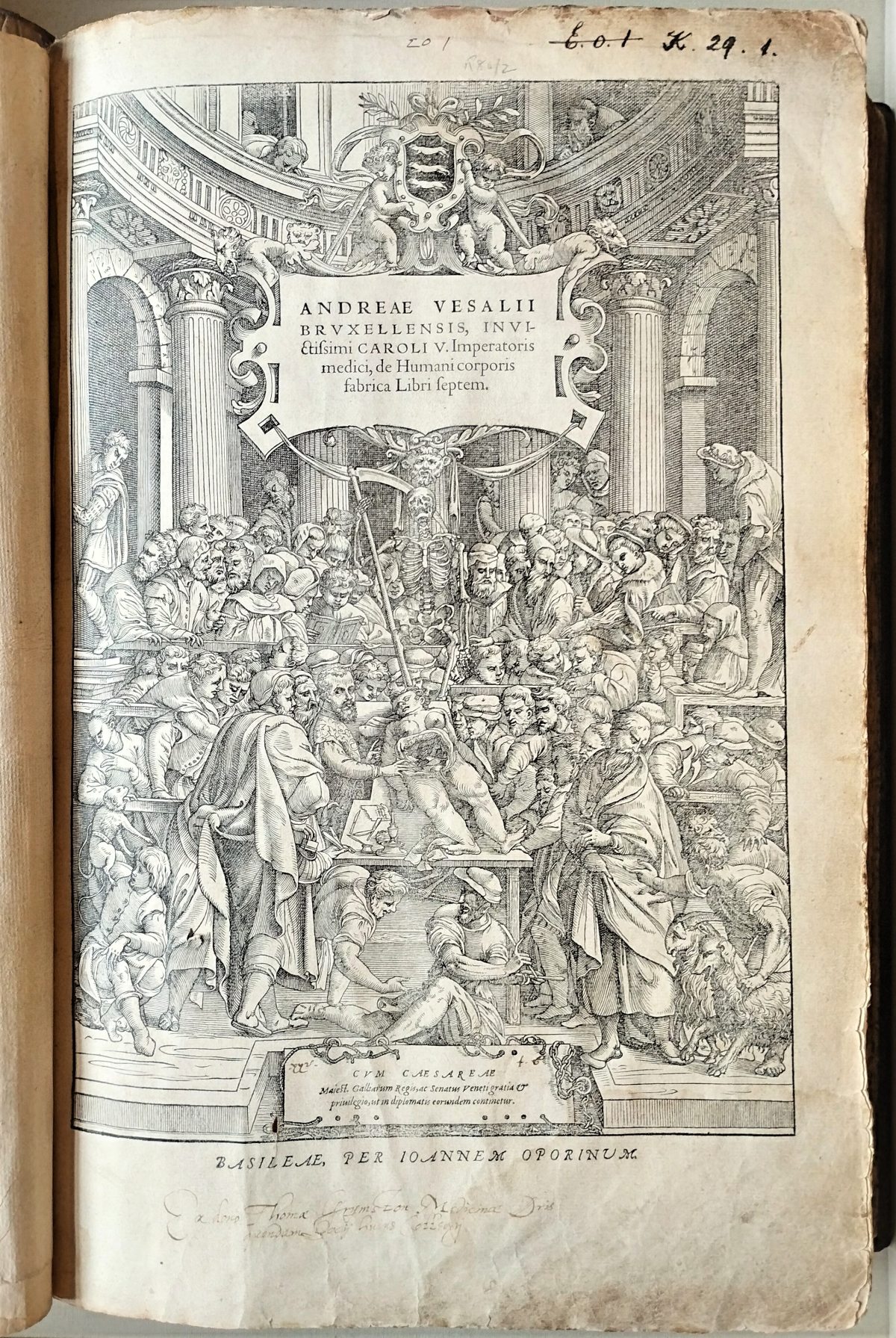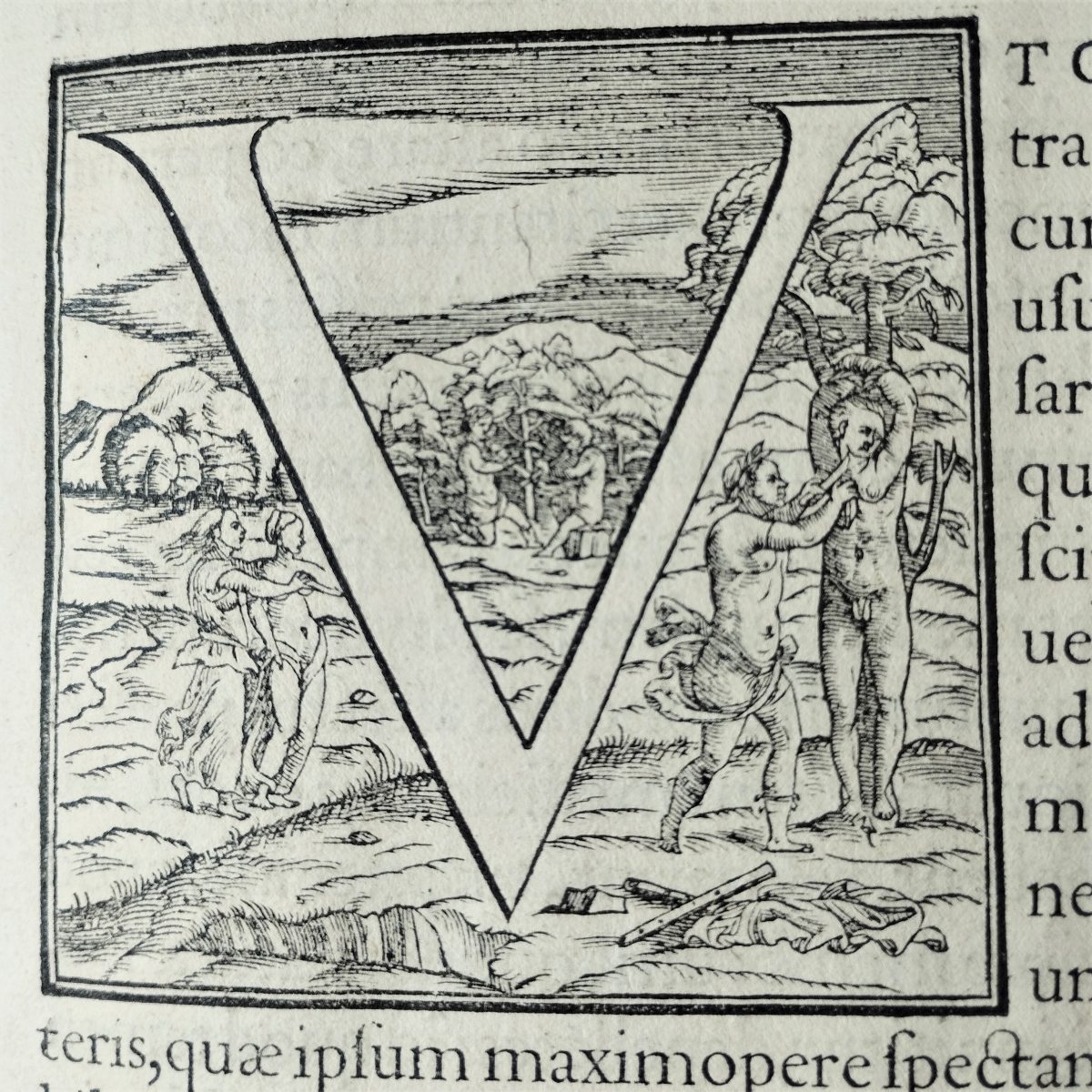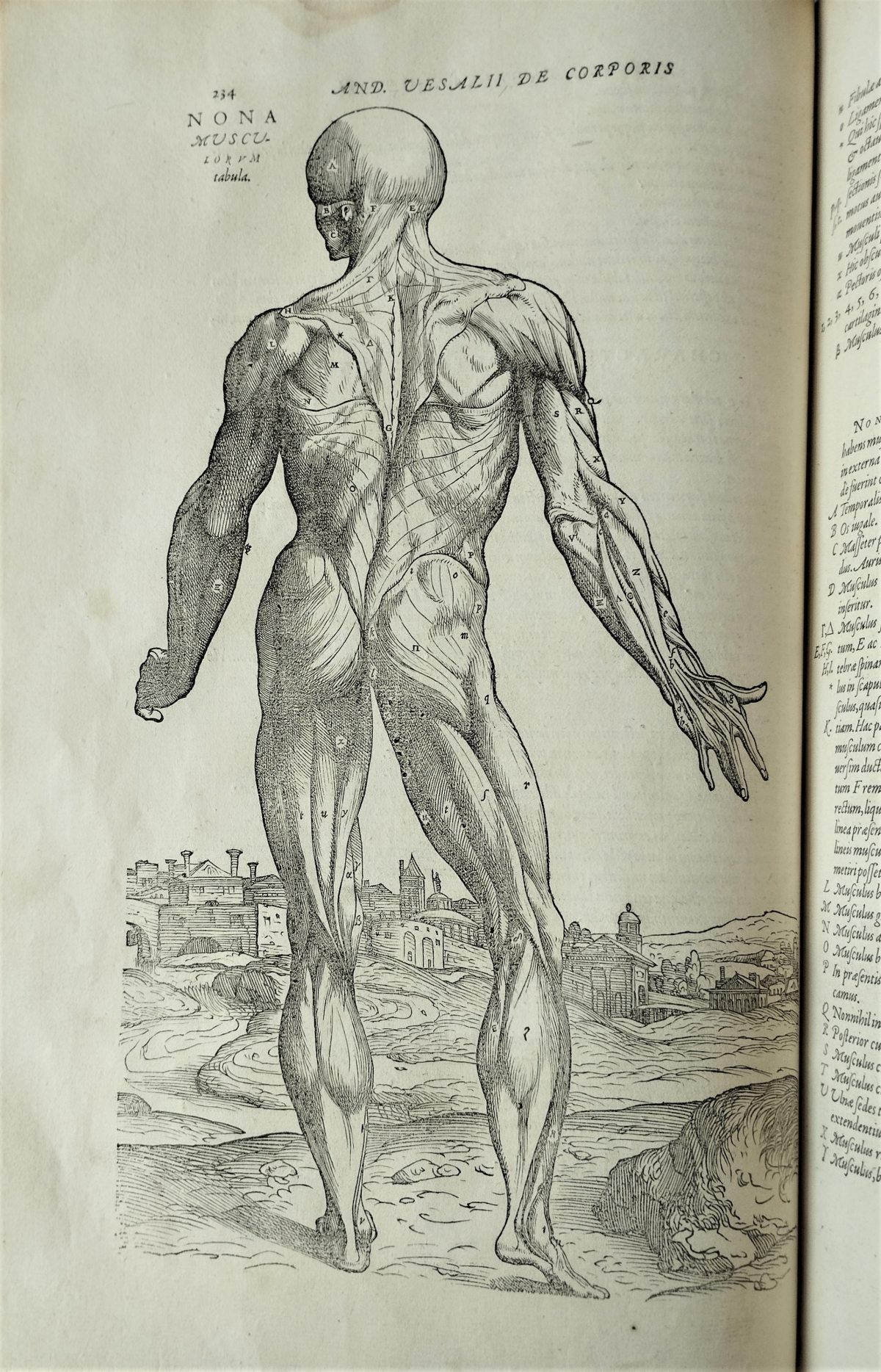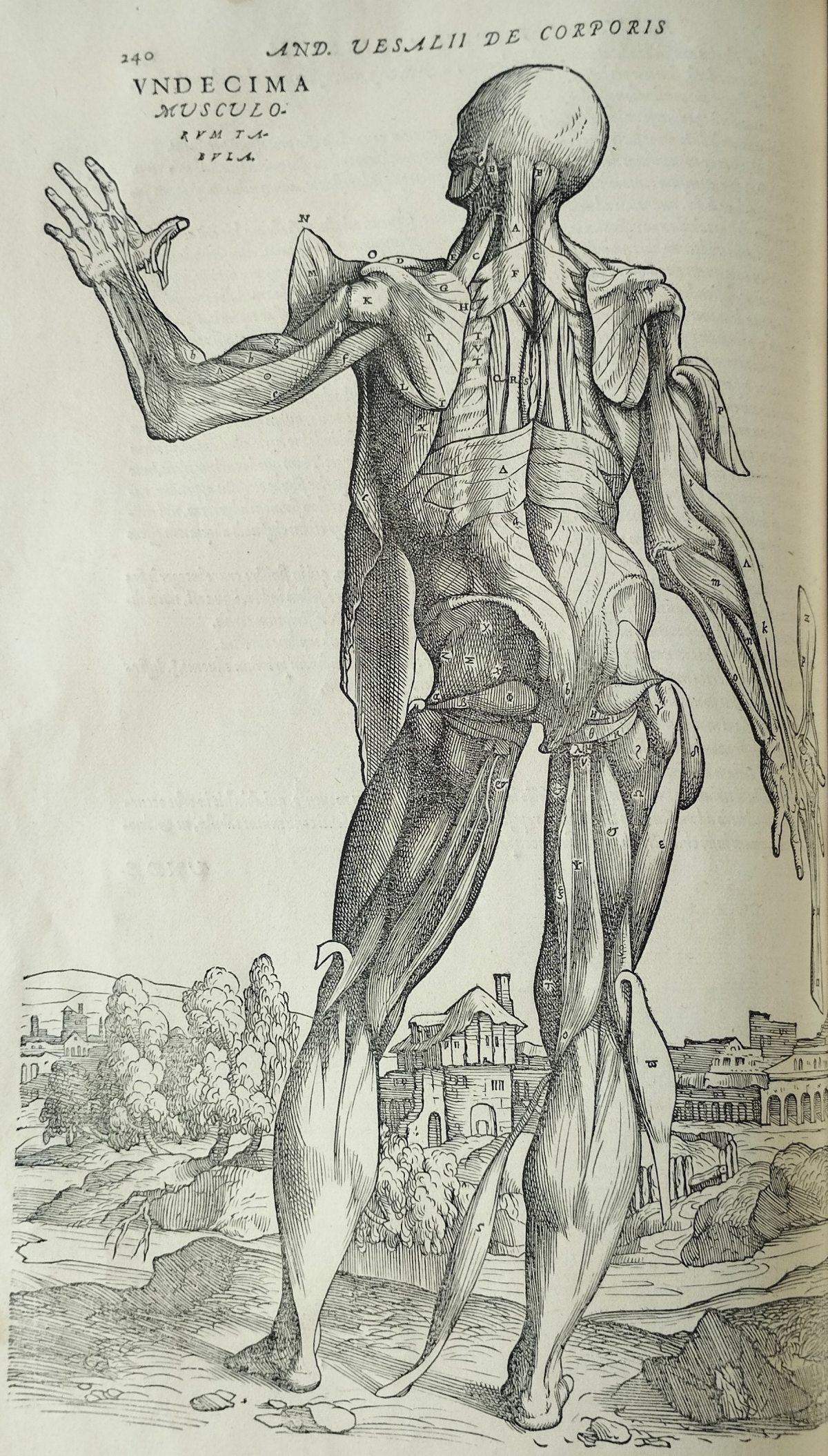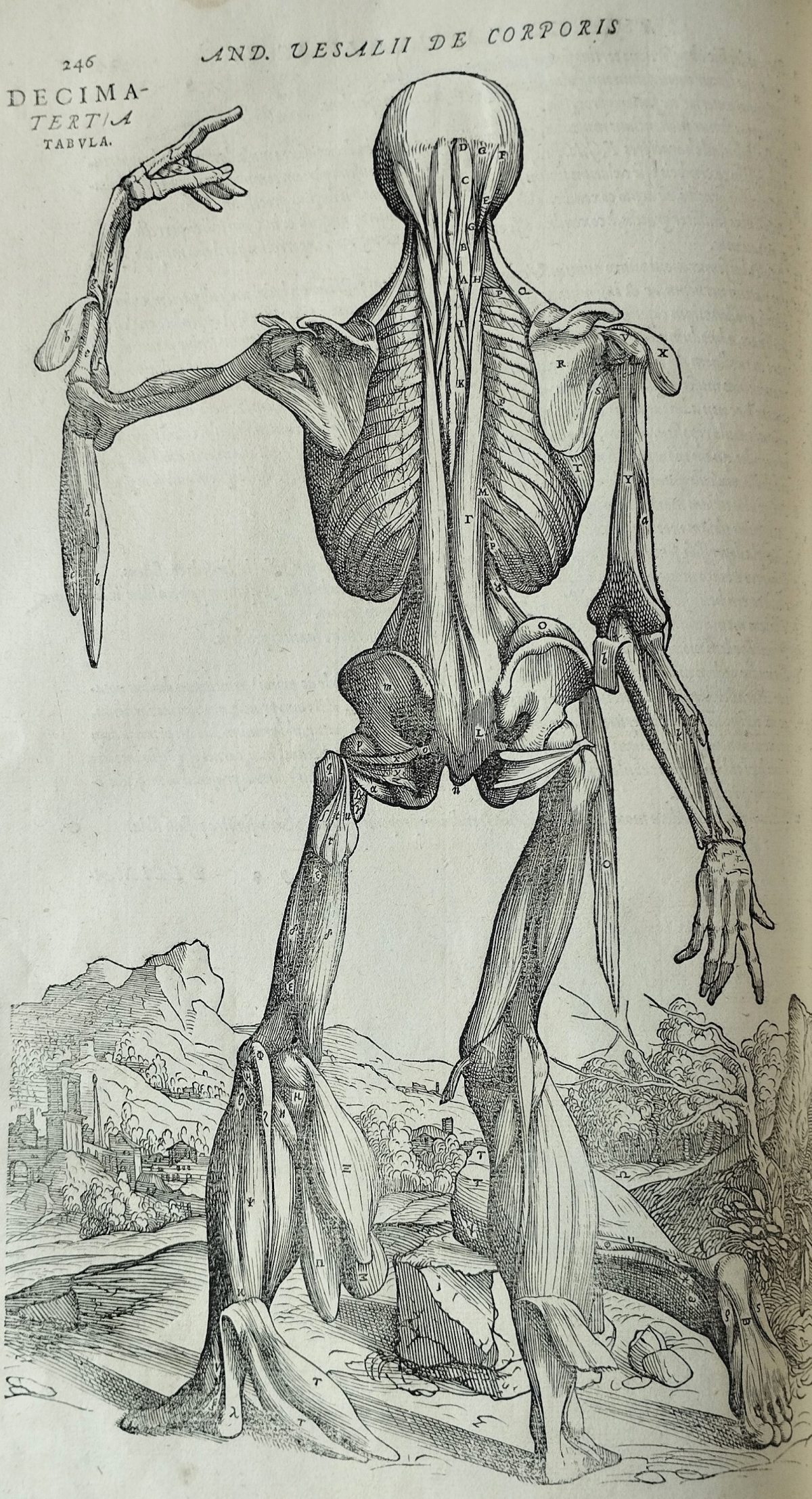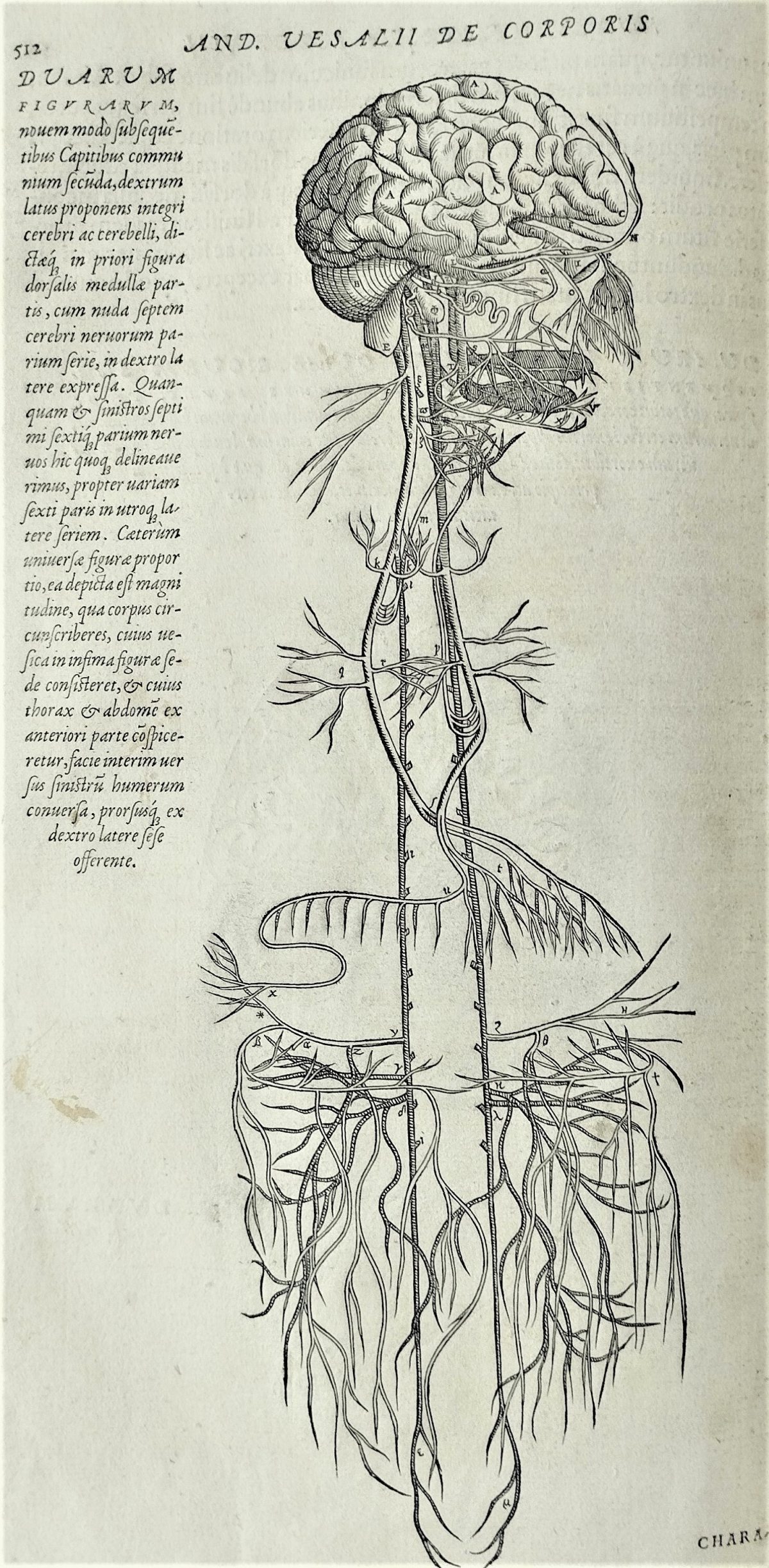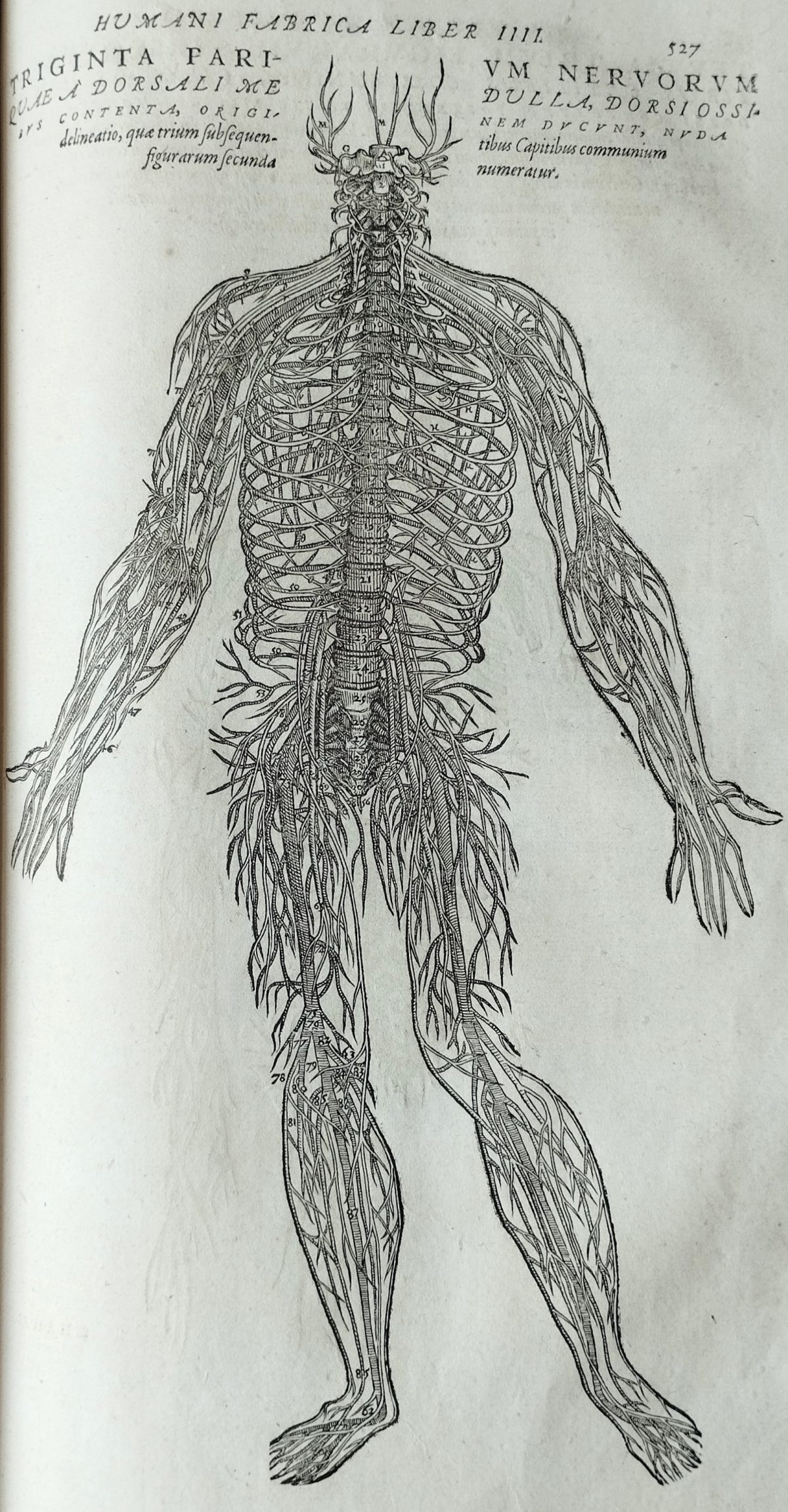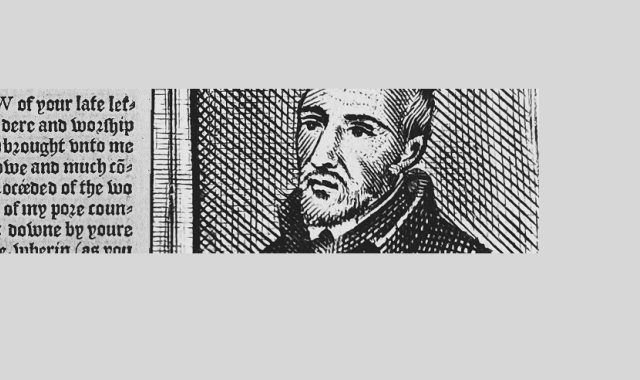The founder of modern anatomy
De humani corporis fabrica libri septem (Of the composition of the human body in seven books), by Andreas Vesalius. Printed in Basel by Joannes Oporinus, 1555. Lower Library, K.29.1
Vesalius, born 1514, was the son of an apothecary. At the University of Padua he was awarded a doctorate in medicine and appointed to a teaching post in surgery and anatomy. One of Vesalius’s more noteworthy students was John Caius, who arrived in 1539; for a short while the two shared some lodgings in the city. Caius was the older man and already a Fellow of Gonville Hall but did not gain his doctorate in medicine until 1541.
At Padua Vesalius performed the anatomical dismembering of human corpses during his lectures, rather than delegating the operation to a surgeon, as was customary. He argued that the study of anatomy was root to all branches of medical study and that human dissections were essential. Vesalius concluded that Galen, whose work had hitherto dominated Western medical understanding, had based his human anatomical conclusions on the vivisection of apes. Around this time he started work on De humani corporis fabrica, now regarded as the decisive origin of modern anatomical knowledge. First published in 1543 our copy is an example of the revised edition, stronger in aspects of craniology and the physiological observations we see in the final chapter.
The title-page is inscribed of the Caian Thomas Grymston, physician in Cambridge and sometime Bursar of the College; the Annals tell us that, in 1601, he conducted a public dissection of a human cadaver, and in this way he was doing no more than fulfilling the instruction of Doctor Caius that ‘every year, during the winter, there shall be spent by the students of our College, on anatomy and on the worthy burial of dissected bodies at St Michael’s, 26s 8d’.
Anatomy before observation << The founder of modern anatomy >> The human temperaments


